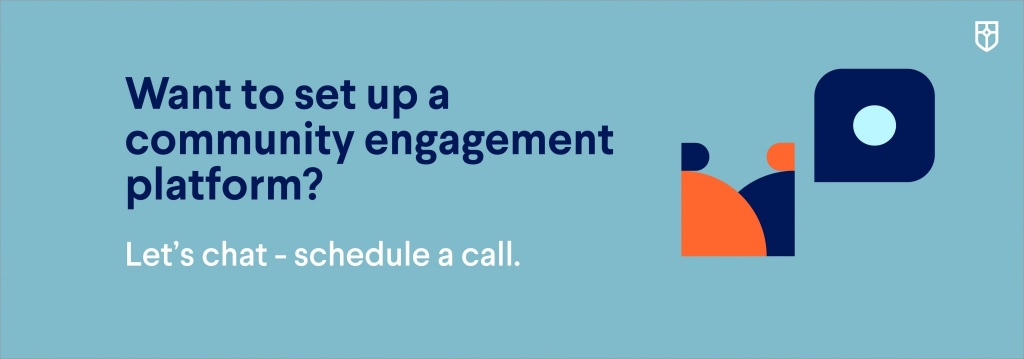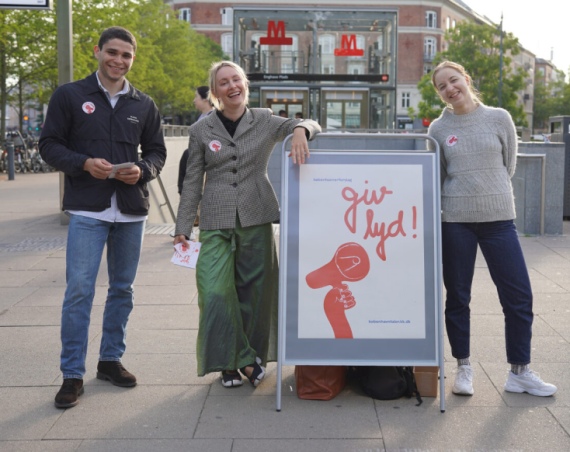With a population of around 94,000, the Stirling Council area sits right in the heart of Scotland. When the outbreak of the COVID-19 pandemic sent shockwaves to communities around the world, Stirling Council found itself with a conundrum: how could they get valuable community input without in-person meetings?
With plans in place to run several high-profile projects on everything from the Climate Emergency to biking, Stirling Council intended to host community engagement drop-in sessions, a big town hall event, and 1-to-1 meetings – but none of that could move forward. So, the Council’s centralised Digital Services team quickly organised to meet their ambitious community engagement plans with the support of digital tools.
An all-in-one solution
“We wanted to achieve a single sign-on for consultations and petitions,” said Jennifer Maclean, Digital Services Team Leader. Despite having centralised digital support, their climate and nature emergency planning is what helped the Council recognise they needed a way to reach more people, get young residents more engaged, and centralise their projects.
While community engagement was taking place via surveys, emails, face-to-face meetings, leaflets, and other traditional engagement methods, their efforts and impact were disjointed. There was nowhere to view all open consultations in one place, making it difficult to manage and creating confusion for residents when they wanted to navigate participation. The team’s aspiration for consultations was to make them as easy and transparent as possible, so they choose to use an online platform, powered by CitizenLab, to help them streamline everything.
“We looked at quite a few potential platforms, and on paper, many looked very similar. But we were really clear on what we wanted and what our community needed, so when you drill down into the functionality you see that CitizenLab is more flexible, visually appealing, and user-friendly,” said Jen.
Moving up the participation ladder
With several ideas for how to maximise the use of petitions – bottom-up submissions by residents who wanted their idea to be on the Council’s agenda for consideration – the Digital Services team worked with CitizenLab to adapt their community engagement platform for their unique needs. Petitions and consultations could now sit side-by-side, making it much easier for participants to navigate between projects. To further drive platform engagement, Jen noted “It was helpful that we were able to ask for minimal personal data input, residents appreciate that.”
Having a centralised engagement hub meant that the Council’s various teams could now run projects simultaneously and offer residents and stakeholders more opportunities for participation. For instance, their climate and nature emergency project engaged residents and stakeholders via polling, surveys, and ideation – all running together.

Encouraging productive conversations
Knowing that some of their more high-profile projects attract a lot of social media attention – which is not always positive in sentiment – there was some worry about the engagement platform simply replicating the (at times) cluttered and chaotic nature of some social media comments. However, the Council was relieved to see that people have been really constructive with their feedback and productive with their conversations. Some steps they took to set up such safe and productive conversations included:
- Creating content that is written in plain English, transparent, helpful, and supportive. Using a tone that shows they want to collaborate with their residents and stakeholders, and coming to them early in the process, also helped community members understand that there really is a chance to influence the way these projects take shape.
- Reserving social media for sharing updates, and using their engagement platform for conversations and two-way dialogue.
- Encouraging word-of-mouth promotion of the projects and platform, recognizing that community ambassadors have significant influence.
- Having a plan of action in place for moderating difficult conversations, should the need arise.
No tokenistic engagement here, folks
Across Stirling Council, various teams were already running successful community engagement initiatives. But the process of bringing those projects onto a centralised hub led to cross-team collaboration, ultimately improving the efficiency of the Council’s internal process and influencing external perceptions about community engagement opportunities.
In collaborating to bring all of their projects onto one platform, the Council’s teams developed an internal engagement process. It covers everything from how to use digital tools and safely collect data, to how to work with diverse communities and best practices for communication. Now, when someone has a consultation project they need to put out to the community, there’s a process to follow to ensure maximum impact. This means the Council’s teams are able to think more strategically about the way projects live together, and it has given residents a single view of all of the projects they can engage on. And, there’s less digital hesitation internally and externally because, as Jen put it, “The fact that the back office is so easy to use has been a massive bonus because it doesn’t scare anyone away, no matter their comfort level with technology.”
Switching to a central engagement hub has also helped with communicating results.
“We didn’t always go back to our citizens with feedback when they participated in a project,” said Jen. “Now, any time a project is launched it has a feedback loop attached. We hope this motivates people because they’ll see how their input and ideas have influenced what the Council has done.”
Change can be good
The Council’s ambitious engagement goals didn’t just advance their use of digital tools, they also encouraged them to use new participation methods. What have they learned along the way? “Bottom-up engagement through petitions doesn’t have to be scary. In fact, with the right planning in place the process can be quite constructive,” said Jen.
When the Council decided to include petitions as an engagement option, they set up a clear roadmap of how a community-led idea would go through the process of being heard, and potentially approved, by the Council. Using petitions, they’ve been able to increase participant registrations on the platform, and two community-led ideas have moved to Council consideration. And thanks to their new feedback loops, the community knows how their ideas are being considered alongside their input on the Council’s proposed ideas.






